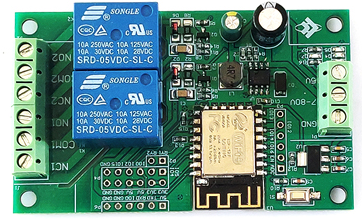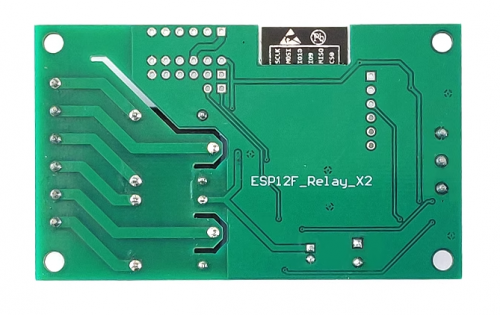LC-WF-6-2
Contents
Product Name
5V/8-80V power supply ESP8266 WIFI dual relay module ESP-12F development board secondary development
Overview
The LC ESP8266 dual relay development board is equipped with ESP-12F WiFi module, with all I/O ports leading out, and supports DC5V/8-80V power supply. Provide Arduino development environment reference code, suitable for ESP8266 secondary development learning, smart home wireless control and other occasions
LC-WF-6-2 View
Functional Features
1. Onboard mature and stable ESP-12F WiFi module, with a large capacity of 4M Byte Flash
2. All I/O ports and UART program download ports of the WiFi module are connected for easy secondary development
3. On board WiFi module RST reset button
4. ESP-12F supports the use of development tools such as Eclipse/Arduino IDE and provides reference programs for Arduino development environment
5. Onboard 2-channel 5V relays, outputting switch signals, suitable for controlling loads with operating voltages below AC 250V/DC30V
6. Onboard power indicator light, 1 programmable LED and relay indicator light
Hardware Introduction and Explanation
1. Board size: 78 * 47mm Weight: 38g
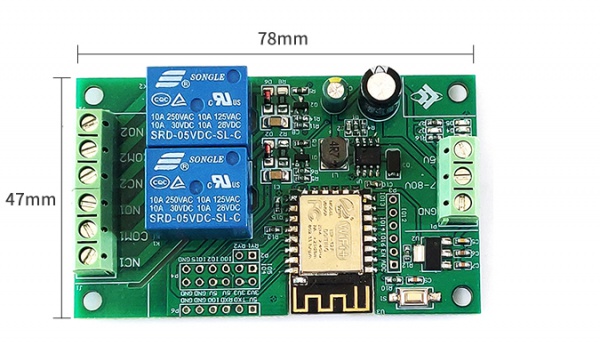
2, Interface Introduction
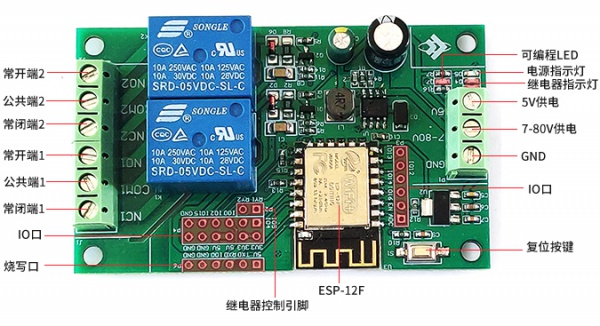
Burn in port: Connect GND, RX, TX, 5V of ESP8266 to the external TTL serial module's GND, TX, RX, 5V respectively. When downloading, connect IO0 to GND, and then disconnect the connection between IO0 and GND after downloading is complete
Relay output terminal:
NC: normally closed end, short circuited to COM before relay closing, suspended after closing
COM: Public End
NO: Normally, the relay is suspended before closing and short circuited to COM after closing
3.Introduction to GPIO Export Ports
| Number | Name | Function Description | Number | Name | Function Description |
| 1 | ADC | A/D conversion result. Input voltage range: 0~1V, value range: 0~1024 | 10 | IO2 | GPO2; UART1_TXD |
| 2 | EN | Enable pin, default pull-up | 11 | IO15 | GPO15; MTDO;HSPI_CS;UART0_RTS |
| 3 | IO16 | GPIO16 | 12 | TXD | UART0_TXD; GPIO1 |
| 4 | IO14 | GPIO14; HSPI_CLK | 13 | RXD | UART0_RXD;GPIO3 |
| 5 | IO12 | GPIO12; HSPI_MISO | 14 | GND | Power Ground |
| 6 | IO13 | GPIO13; HSPI-MOSI; UART0_CTS | 15 | 5V | 5V power supply |
| 7 | IO5 | GPO5 | 16 | 3.3V | 3.3V power supply |
| 8 | IO4 | GPO4 | 17 | RY1 | One relay drive port, which can be short circuited with a short-circuit cap and IO5; If you want to use other I/O drive relays, you can use DuPont jumper wires |
| 9 | IO0 | GPO0 | 18 | RY2 | One relay drive port, which can be short circuited with a short-circuit cap and IO4; If you want to use other I/O drive relays, you can use DuPont jumper wires |
4, Arduino development environment setup
ESP8266 supports development tools such as Eclipse/Arduino IDE, and using Arduino is relatively simple. Here is the method to build an Arduino development environment:
1. Install Arduino IDE 1.8.9 or the latest version
2. Open the Arduino IDE, click on "File" ->"Preferences" in the menu bar, enter "Preferences", and then click on "Add URL" in the "Additional Development Board Manager URL": http://arduino.esp8266.com/stable/package_esp8266com_index.json ,
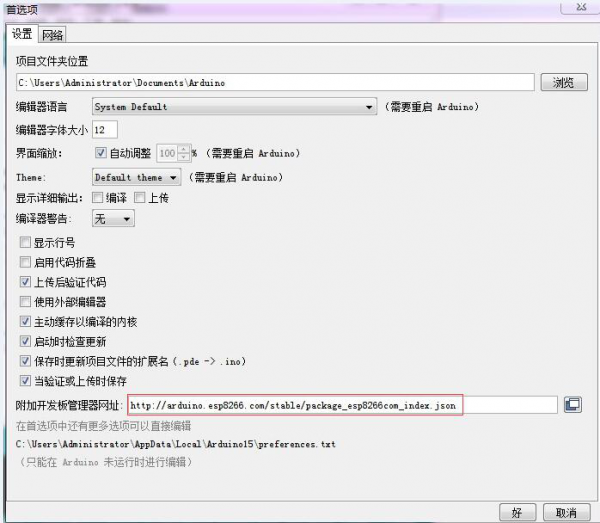
3. Click on "Tools" ->"Development Board" ->"Development Board Manager" in the menu bar, and then search for "ESP8266" to install Arduino support package 2.5.2 or the latest version for ESP8266
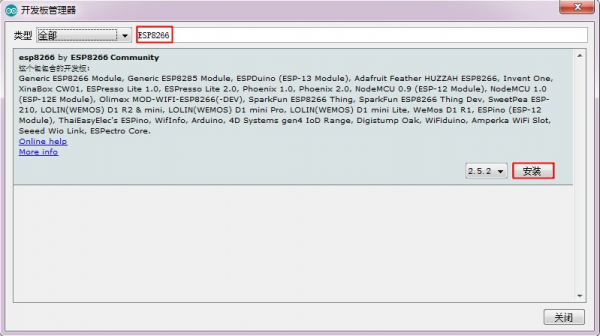
Note: Due to the download URL being from overseas, the access speed is relatively slow and there may be download errors. Please try a few more times when the network is good
5, Program Download
1. Use a jumper cap to connect the IO0 and GND pins, and prepare a TTL serial port module (such as FT232) to plug into the computer USB. The connection method between the serial port module and the development board is as follows:
| TTL serial port module | ESP8266 development board |
| GND | GDN |
| TX | RX |
| RX | TX |
| 5V | 5V |
2. Click on the tool in the menu bar - Development Board, select ESPino (ESP-12 module) as the development board
3. Open the program you want to download, click on "Tools" in the menu bar, select "Port" and choose the correct port number
4. After clicking "Upload", the program will automatically compile and download to the development board, as follows:
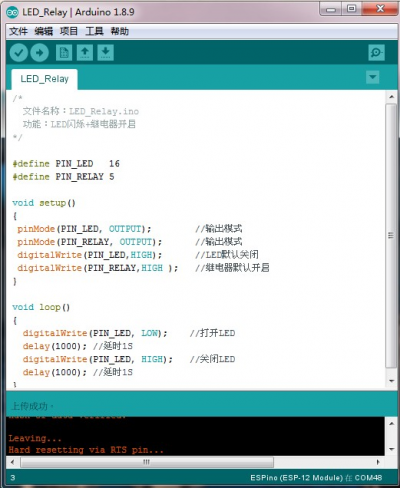
5. Finally, disconnect the connection between IO0 and GND, and the development board can be powered on again or press the reset button to run the program
Download LC-WF-6-2 User Manual
For more information on the use of LC-WF-6-2, please refer toBaidu Netdisk Extraction code: d0cb
